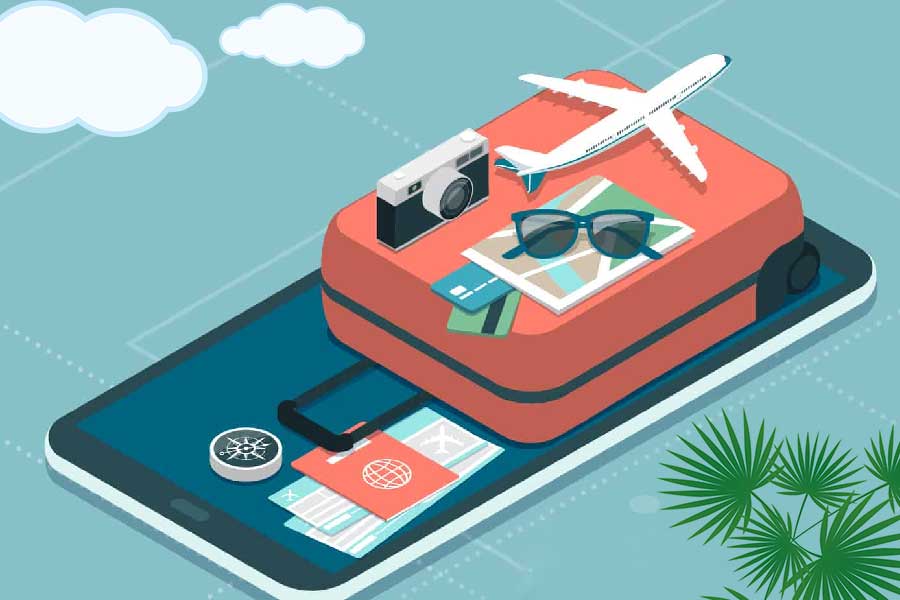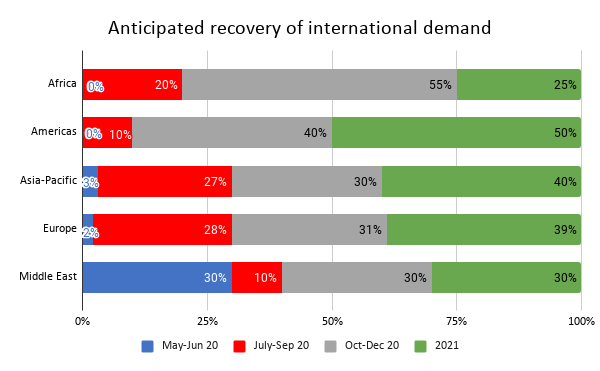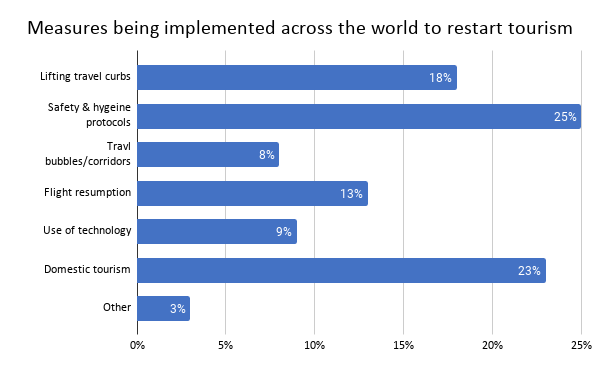Pandemic tourism, sans the imprint
Given the uncertainty surrounding the cure, the COVID-19 era poses existential challenges for the global tourism industry. From biometrics to baggage management to plexiglass screens and sanitised casino chips, stakeholders are waking up to the possibilities of touchless travel.
• In today’s fractured world, where COVID-19 has turned the ideology of globalisation on its head, the travel industry has been one of the worst affected ones in terms of economic implications.
• However, unhurriedly but cautiously, countries around the world have started easing these curbs on the movement of people and early signs of revival have started emerging.
• Ensuring a touchless travel experience holds the key to rekindling the sector and transitioning from the present surviving mode to the thriving mode in the future.
• Developing collaborative relationships with diverse stakeholders across the spectrums is crucial to this process.

In today’s fractured economic landscape, where COVID-19 has turned the ideology of globalisation on its head, governments, industry leaders and the public are increasingly concerned. The fear of rising numbers of infections has become a nightmare for them, thereby forcing travel and entry restrictions at international borders. The latest issue of the World Tourism Barometer states that international tourist arrivals dropped by 65% during the first half of 2020.
This unprecedented development translates into a loss of 440 million international arrivals and about US$ 460 billion in revenues from international tourism. For the travel and tourism industry, there are additional unsavoury estimates of around 50 million jobs being lost worldwide in this sector. Add to this the major setback for business engagement across sectors, which has shifted so comprehensively to the digital domain, with questionable and varying degrees of effectiveness.
To curb the massive economic fallout, countries have started easing curbs on the movement of people and early signs of revival have started emerging. Data from UNWTO reveals that as of early September, 53% of destinations had eased travel restrictions. Apart from this, many nations across the world are taking steps to revive their tourism industry. For example, Portugal’s national tourism authority has introduced a travel insurance scheme for foreign tourists that covers COVID-19 related claims to instill confidence in travelers.
Similarly, New Zealand and Australia are developing a trans-Tasman “COVID-safe travel zone“, while India was negotiating bilateral air bubble arrangements with 13 countries as of last month. Romania & Serbia have created tourist passes & vouchers for the same reason. Clearly, the global travel and tourism industry is not going to die a slow death due to the pandemic. But surviving in the present paradigm till we are past this crisis will take some major reorientation in the manner the industry does business.

SOURCE: World Tourism Organization (UNWTO)
Time to challenge orthodoxies
Prior to COVID-19, passenger satisfaction was largely driven by speed, efficiency and the personal touch provided by airline staff. However, with the resumption of travel and the lifting of curbs in many destinations, sanitation, hygiene and ‘touchless’ will become the key to ensuring a safe and seamless travel experience. This is because all public spaces are now possible zones of coronavirus transmission.
Identifying which countries have changed restrictions; what standards the hospitality industry has implemented; and what local regulations mean for social distancing are important initial steps in any journey. Artificial intelligence can help immensely by sourcing and accessing data and information from travel providers, sellers, and destinations. Zero contact payment solutions such as such as instant credit and payment by instalment can help instill confidence in travelers. At the same time, in this new normal, the adoption of standardized digital travel credentials and initiatives like IATA’s ONE ID concept, which promote the use of biometrics for a smoother journey must be accelerated.
While online bookings and payments can be one solution to rule out the chances of infection, the major points of contact arise on the journey itself, particularly when arriving at, or travelling through airports. In particular, they are the ideal breeding ground for the germination and dissemination of the contagion because of the influx of passengers from far off places where the incidence of COVID-19 is unclear.

Source: UNWTO
Touchless travel is, by wide consensus the only way this can be attained, through emerging technologies like biometrics, distributed ledger and machine learning. The use of biometrics for passenger screening and queue measurement to display wait times can play a critical role in removing fear among the passengers, in addition to basic things like temperature scans.
To that end, airports and other public places can model the environment for multi-modal contactless biometric opportunities, and they can partner and leverage the capabilities of in-house stakeholders. A case in point is a leading North American airline, which handles up to 6,000 flights a day and over 100 million passengers per year.
The airline developed a personalized touchless customer-centric baggage management solution a few years back, with its service provider partner, Infosys. The airline created a “hub,” a central data repository for baggage handling connects to critical field service apps (including the ramp agents who load and scan the bags) and, ultimately, customer-facing applications to keep the customer informed of the status of their luggage.
Lastly, once travellers come to the country, it must be ensured that hotels, lodges and other public places offer a safe environment & travel experience to visitors. Organizations will need to reimagine the customer experience and re-engage with customers in novel ways to build and maintain their trust. Moving from high touch to touchless mode of delivery through technology, space design, meeting set-up and food & beverage offerings is the need of the hour.
Frequent cleaning drives and ensuring that nobody having the symptoms of COVID-19 enters the premises is important at all times. In Singapore, for example, customers use the SafeEntry smartphone app to scan a QR code before they enter any restaurant, hotel, or other venue. This app creates a digital repository of each customer’s travels and visited locations to support Singapore’s contact tracing efforts.
Establishing separate spaces for takeout and dine-in service, or installing plexiglass screens to protect diners from each other are some of the other options that can be ensured to ensure safety of visitors. Casinos can offer a safe environment by reducing the number of players at gaming tables, installing protective screens between players and staff, and cleaning dice and chips between each throw. Tracking players’ previous movements and checking their health certification on entry, and staff shredding playing cards after each round are initiatives that casinos in Macau are practicing to maintain safety.
Considering the uncertainty on the COVID-19 vaccine, the world must learn to adjust to the new normal. Rather than promoting isolationism and responding reactively to this shock, stakeholders must collaborate to protect public safety while facilitating the movement of legitimate travelers. Developing collaborative relationships with diverse stakeholders across the spectrums and automating processes to eliminate human contact and hence the chances of viral transmission are crucial to restoring the confidence of travelers and reviving the sector.













Leave a comment